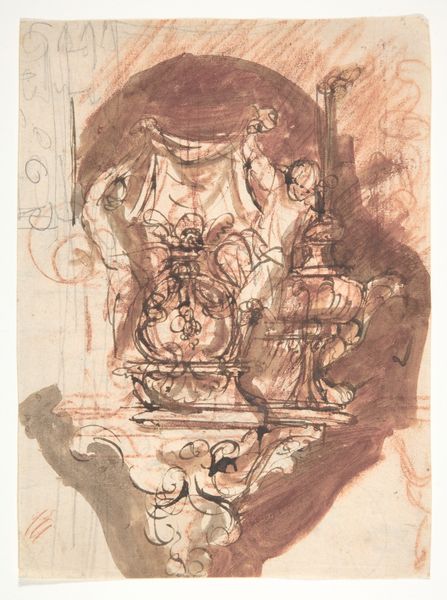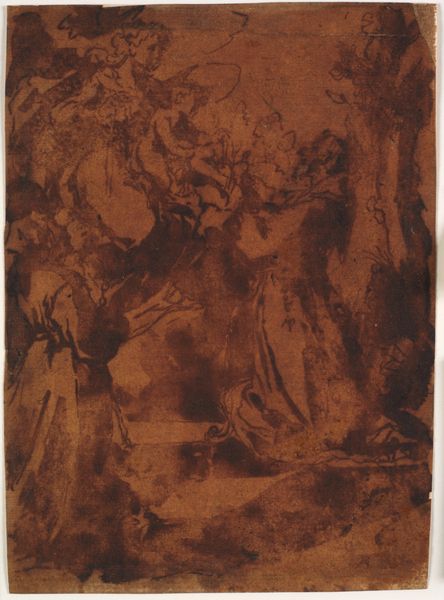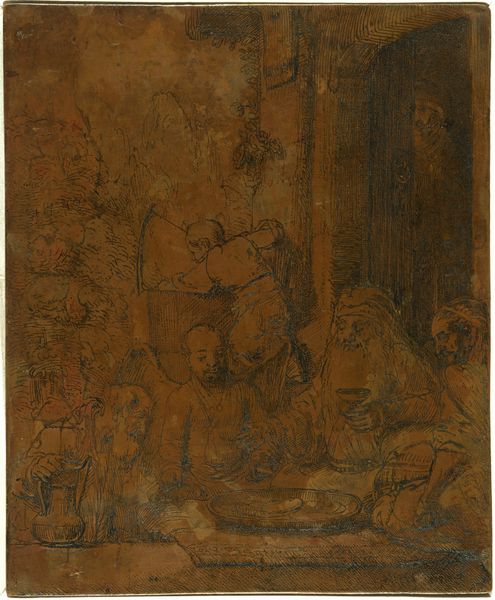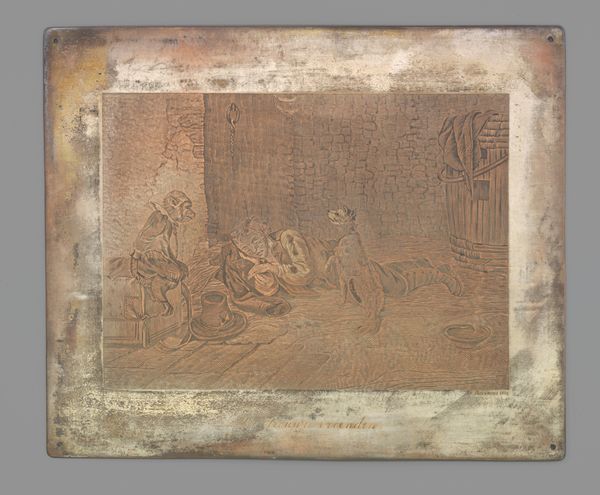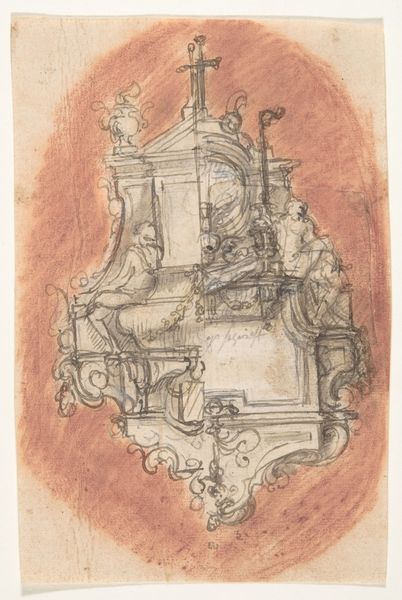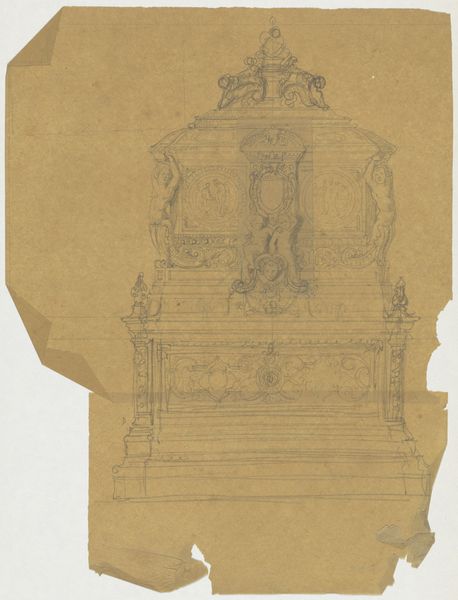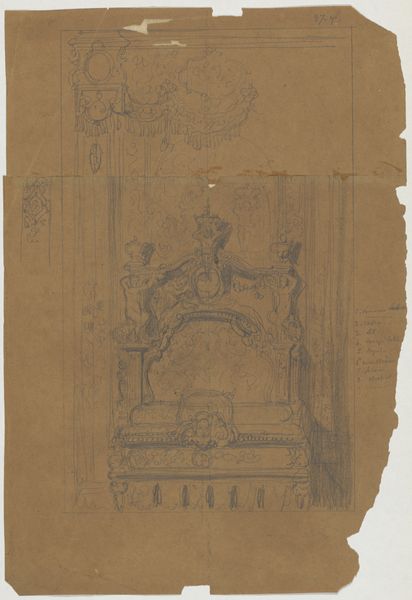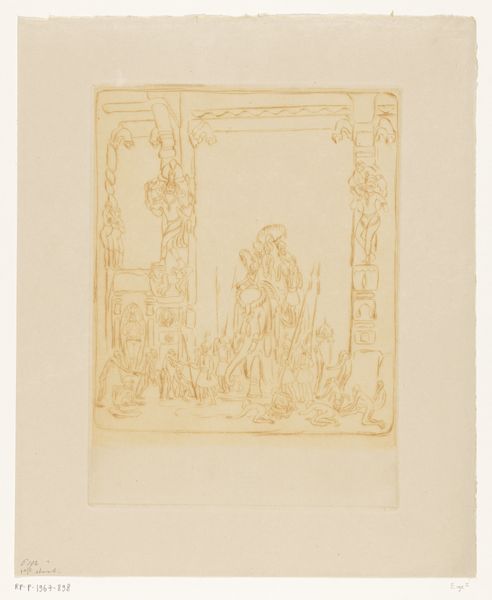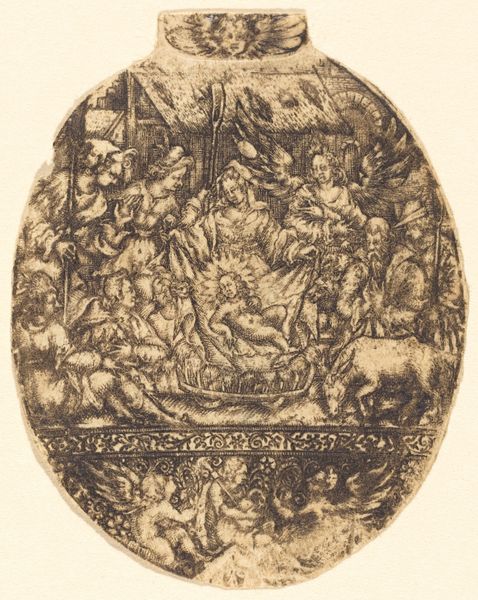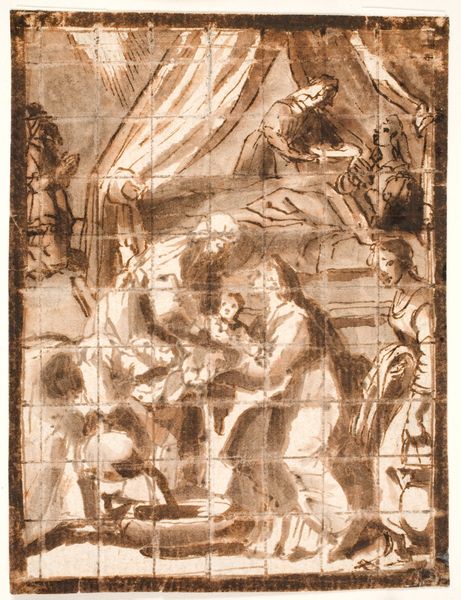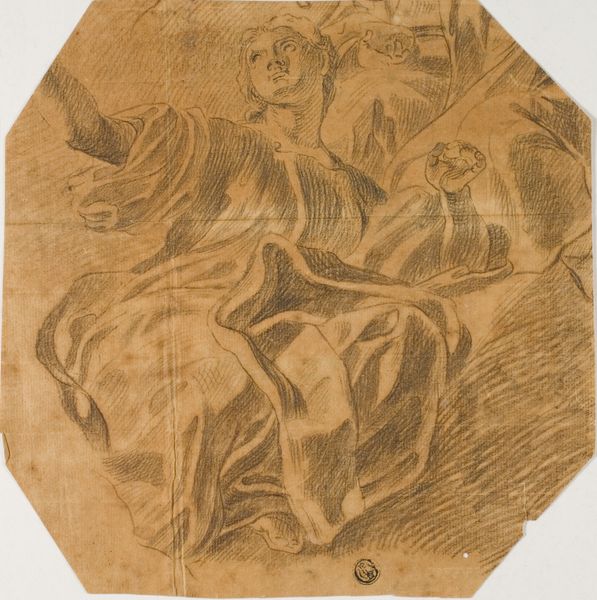
Design for a sepulchral monument; verso: Fragment of a letter and notes 1686 - 1724
0:00
0:00
drawing, print, ink, pencil
#
drawing
#
baroque
# print
#
pencil sketch
#
human-figures
#
figuration
#
ink
#
pencil
#
history-painting
Dimensions: sheet: 9 5/8 x 6 1/4 in. (24.5 x 15.9 cm)
Copyright: Public Domain
Curator: Immediately, I'm struck by the mournful, almost theatrical drama of this sketch. Editor: Let's delve into that a bit. This is Pieter Verbruggen the Younger's "Design for a Sepulchral Monument," dating roughly from 1686 to 1724. It's currently held at the Metropolitan Museum of Art. We see ink and pencil on paper, presenting a preparatory idea rather than a final piece. Curator: The weeping figures, the cherub with the tools of mortality above… it’s so laden with symbolic weight. Who would this monument commemorate, and what were the visual politics at play here? The piece invites me to consider grief rituals. Editor: Contextually, the Baroque era saw a flourishing of such elaborate memorials. Death and commemoration were highly public performances, closely linked to social status and power. Verbruggen, coming from a family of sculptors, understood this intimately. The blank central space awaiting inscription tells me it could have been a starting place for anything from aristocrats to religious figures. Curator: It speaks volumes that even in its sketch form, this artwork conveys potent emotions tied to hierarchy and societal structures. The figures are actively grieving; their gender, class, and station undoubtedly determined who received acknowledgment and memory and to what scale. Editor: Precisely. It pushes us to contemplate the relationship between artistic patronage, social identity, and the lasting visual representation of one’s existence after death. Consider how institutions shaped visibility of these narratives. Curator: So, on one level, the design emphasizes power structures in both life and death, making them perpetually visible, almost ossified. Yet, it invites reflection on the experiences of grief. Perhaps these monumental forms amplified voices silenced or excluded. Editor: Absolutely. The act of remembrance—its control, its aesthetics—becomes deeply significant in its visual declaration, prompting us to examine broader social dynamics. Curator: To me, this monument goes beyond memorializing a single person and visualizes social stratifications within mourning culture itself. Editor: It becomes, therefore, an invaluable artifact when viewed with intersectional lenses. I thank you for sharing that profound insight.
Comments
No comments
Be the first to comment and join the conversation on the ultimate creative platform.

